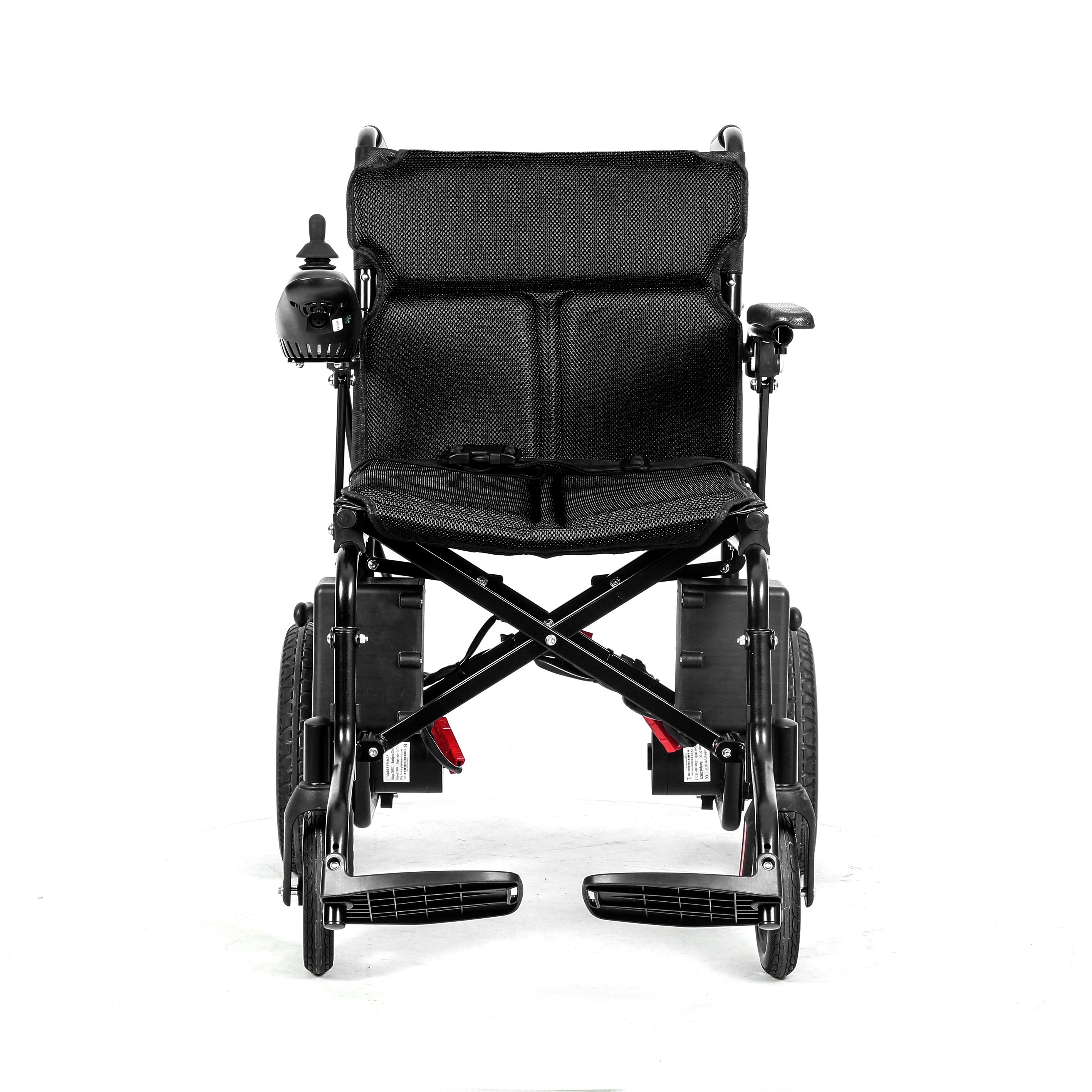Electric wheelchairs have revolutionized mobility for many individuals, providing increased independence and freedom. But if you’re thinking of investing in one, you might wonder: how many batteries does an electric wheelchair actually use? Understanding the number and type of batteries can help you make an informed decision for both your customers and your business.
In this article, we’ll discuss how many batteries an electric wheelchair typically uses, what factors influence battery choice, and why choosing the right battery is crucial for optimal performance. We’ll also touch on how the battery configuration can vary based on the wheelchair model and offer advice on selecting the best battery for your needs.
Introduction to Electric Wheelchair Batteries
Electric wheelchairs are powered by rechargeable batteries, which provide the energy necessary for mobility. Typically, the wheelchair operates using two main types of batteries: sealed lead-acid (SLA) and lithium-ion. These batteries are essential for powering the motors, which enable the chair to move and support various features such as tilt and recline.
But why two batteries? What role do they play in ensuring the wheelchair operates smoothly? This article explores these key questions and helps you understand the importance of selecting the right battery for an electric wheelchair.

How Many Batteries Does an Electric Wheelchair Need?
Most electric wheelchairs use two batteries, although the specific number can depend on the type and model of the wheelchair. These batteries are typically connected in series to increase the voltage, which is essential for the motors to function properly.
The Two-Battery Configuration
1. Voltage Requirements: Electric wheelchairs typically require a 24-volt power supply. By connecting two 12-volt batteries in series, you achieve the necessary voltage output. This configuration allows the wheelchair to have sufficient power to cover daily distances and support various functionalities.
2. Battery Capacity and Lifespan: The total capacity of these batteries (measured in amp-hours, Ah) affects how long the wheelchair can run on a single charge. Higher capacity batteries allow for longer driving ranges, making them ideal for users who need their chairs for longer durations.
3. Battery Type Choices:
a. Sealed Lead-Acid (SLA) Batteries: These are the most commonly used and economical option. SLA batteries are heavy, but they offer a reliable power source for electric wheelchairs.
b. Lithium-Ion Batteries: These batteries are becoming increasingly popular due to their lighter weight, longer lifespan, and quicker charging times. They are a bit more expensive but provide better long-term value for users.
Are There Exceptions?
Yes, there are some exceptions to the two-battery standard. Some high-powered or all-terrain wheelchairs may require three or four batteries. These models often have higher energy demands due to features like more powerful motors, additional seating adjustments, or the ability to navigate rougher terrains.
How Do Batteries Affect Electric Wheelchair Performance?
Battery performance directly impacts the overall functionality of an electric wheelchair. Here are some factors to consider:
1. Driving Range: The higher the battery capacity, the longer the wheelchair can travel on a single charge. For instance, if you’re looking for a wheelchair that can cover long distances, opting for a model with high-capacity lithium-ion batteries may be ideal.
2. Charging Time: Different types of batteries have different charging speeds. SLA batteries can take several hours to recharge, while lithium-ion batteries can be recharged much faster.
3. Weight and Portability: Weight is a significant factor in the ease of use and portability of a wheelchair. Lithium-ion batteries are much lighter than SLA batteries, making the chair easier to handle and more maneuverable.
4. Durability and Lifespan: SLA batteries typically last between 1-2 years, depending on usage and maintenance, while lithium-ion batteries can last much longer – typically 3-5 years, which makes them a more cost-effective long-term investment.
How to Choose the Right Battery for Your Electric Wheelchair
When purchasing or recommending a battery for an electric wheelchair, it's important to consider the following:
● Compatibility: Ensure that the battery matches the manufacturer’s specifications for voltage and size.
● Battery Type: Decide between SLA and lithium-ion based on your needs for weight, longevity, and budget.
● Capacity: Larger batteries will last longer but may add extra weight.
● Warranty and Support: Look for batteries that offer solid warranties and after-sales support for peace of mind.
Battery Maintenance for Electric Wheelchairs
To get the most out of your electric wheelchair’s battery, regular maintenance is essential. This includes:
● Charging Regularly: Avoid letting the battery completely drain; charging after each use can prolong its lifespan.
● Storing Properly: If you don’t plan to use the wheelchair for a while, store the battery in a cool, dry place and keep it partially charged.
● Cleaning Contacts: Keep the battery terminals clean to ensure a good connection and avoid power loss.
Tips for Better Battery Longevity
1. Always charge the battery fully before use.
2. Avoid overcharging or undercharging the battery.
3. Regularly check the battery’s voltage to ensure it’s still functioning correctly.
Conclusion
Understanding how many batteries an electric wheelchair has is key to making an informed purchasing decision. Most models require two batteries, but more advanced models may need more. With the right battery type and configuration, electric wheelchairs can offer extended mobility and reliable performance.
At Guangzhou Topmedi Co., Ltd., we provide a range of high-quality electric wheelchairs equipped with the latest battery technologies. Whether you're a reseller or a direct buyer, our products ensure both performance and longevity. Make sure to check out our electric wheelchair offerings today for the best solutions for your customers.
FAQ
Q: How many batteries do electric wheelchairs use?
A: Most electric wheelchairs use two batteries connected in series to provide the necessary 24-volt power.
Q: What is the difference between SLA and lithium-ion batteries?
A: SLA batteries are heavier and less expensive, while lithium-ion batteries are lighter, more durable, and last longer.
Q: How long does a battery last in an electric wheelchair?
A: SLA batteries typically last 1-2 years, while lithium-ion batteries can last 3-5 years with proper maintenance.
Q: Can I upgrade my electric wheelchair’s battery?
A: Yes, depending on your wheelchair model, you may be able to upgrade to a higher-capacity battery or switch from SLA to lithium-ion for better performance.

























